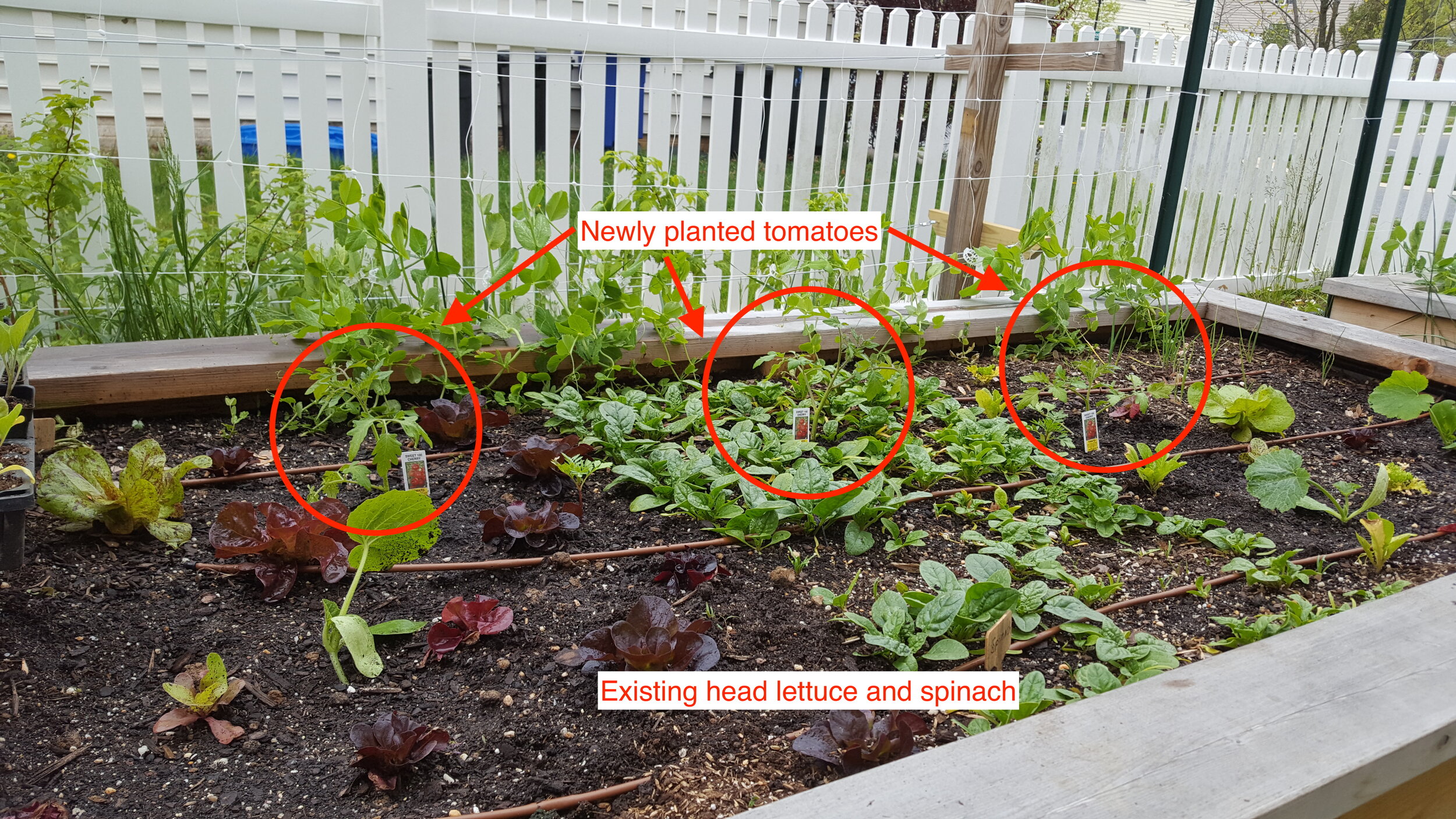May and June bring fruiting crops including tomatoes, peppers, eggplants, cucumbers, and squash. Each year we navigate a delicate balancing act of giving our Spring crops a chance to reach their full maturity and finding room for new Summer crops. Many longer season brassicas like broccoli, cabbage, and kale will be in the garden well into the Summer. So what can you do?
We like to take advantage of beds of greens like arugula, spinach, or mustard greens that can act as a living mulch for larger fruiting crops. Minimal interference is needed to pull out the center of greenery patches for a tomato seedling. Similarly, planting between head lettuces will give Summer crops room to grow as the heads come out. Keep in mind that, as Summer crops grow tall, they may shade out the lower plants around them. In the heat of the Summer, leafy greens don’t mind some shade but more demanding veggies like broccoli, kales, and cabbages should get as much sun as possible! Once Spring crops start coming out of the garden, a second succession of Summer crops can be added to the new space.
Check out some real world examples of successional planting from our gardens below!
In this in-ground garden, we had a full bed of head lettuces where we needed to plant eggplant. Many of these heads of lettuce are sizing up and will be harvested soon. Meanwhile, the eggplant seedlings are small enough to fit in between the heads. The eggplants will grow taller, giving the lettuce shade as it get’s hotter, and by the time the eggplant needs more room, the lettuce will be harvested.
In this raised bed, we fit three new tomato plants while allowing head lettuces and spinach to continue to grow. Much like the garden pictured above, the tomatoes will grow in between the head lettuces, which will be harvested by the time the tomatoes need space. The bed of spinach, on the other hand, can be harvested continuously underneath the new tomato plant and will provide a “living mulch” to keep the ground moist and cool.







